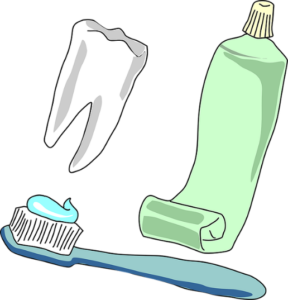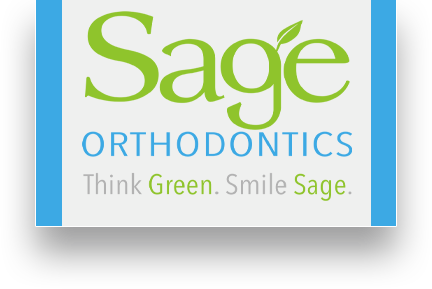Orthodontist Near Me
 Did you know your oral health can impact your overall health? We’ve compiled a list of 5 tidbits about your teeth and oral health.
Did you know your oral health can impact your overall health? We’ve compiled a list of 5 tidbits about your teeth and oral health.
Say Cheese
Cheese has been found to promote dental health by helping prevent tooth decay. The calcium and phosphorus found in cheese help neutralizes acid in the mouth. Acid can create dental erosion, which can cause decay that may require filling. Cheese creates a protective film around teeth and helps remineralize the enamel.
Keep Smiling
Your smile can make a difference. Studies have found that 50% of people consider a smile the first facial feature they notice. One study found that 88% of us remember people with beautiful smiles whenever we meet new people. This means attractive smiles are key to being more noticeable and remembered.
Toothbrush Time
Don’t forget to replace your toothbrush at least once every three months. You should get a new toothbrush after recovering from any sort of viral infection, flu, or cold. You are more likely to be re-infected if these bacteria implant themselves on the bristles.
You’re Unique
In your lifetime, you only get two sets of teeth— baby teeth and permanent teeth. It is important to take proper care of your permanent teeth. Did you know that no two people have precisely the same set of teeth? Your teeth are as unique as a fingerprint. This is the reason teeth are used by investigators for identification. Your tongue also has a unique print, though it is not commonly recorded.
F.Y.I on Floss
Floss is a lot more useful than you may think. If you skip out on your daily flossing, you can miss cleaning up to 40% of your tooth surfaces. Flossing can also help prevent gum disease by removing plaque near the gum line. Floss has other alternative creative uses. The next time you are looking for a fun holiday project, grab some dental floss and a handful of cereal to string for the tree. Floss works well for repairing a bead necklace too!
Bonus Fact: Health professionals are rated among the most trusted people in the U.S so make sure to call our dentist and make an appointment today!
3275 Cooley Court
Suite 155
Portage, MI 49024
Phone: (269) 327-0760


 Calcium is an important mineral for building strong, healthy teeth. Not everyone can tolerate the lactose found in dairy, which is often a prime source for calcium. There are a wide variety of options available to get the calcium you need. Here are six options rich in calcium:
Calcium is an important mineral for building strong, healthy teeth. Not everyone can tolerate the lactose found in dairy, which is often a prime source for calcium. There are a wide variety of options available to get the calcium you need. Here are six options rich in calcium: Most comprehensive orthodontic treatment will involve the use of braces or aligners. In either case, your treatment involves minor movement of your teeth to correct misalignment. This ensures both a straight smile and an even bite.
Most comprehensive orthodontic treatment will involve the use of braces or aligners. In either case, your treatment involves minor movement of your teeth to correct misalignment. This ensures both a straight smile and an even bite. Did you know that dentistry dates back to around 400-300 BC? Hippocrates and Aristotle actually contemplated ways to straighten teeth and fix certain dental conditions. Archaeologists have found numerous mummies with what appears to be metal bands wrapped around their teeth. Researchers believe this is the first sign of ancient orthodontics put in use in attempt to straighten teeth.
Did you know that dentistry dates back to around 400-300 BC? Hippocrates and Aristotle actually contemplated ways to straighten teeth and fix certain dental conditions. Archaeologists have found numerous mummies with what appears to be metal bands wrapped around their teeth. Researchers believe this is the first sign of ancient orthodontics put in use in attempt to straighten teeth. Your smile is important. The state of your oral health can affect your opportunities, your confidence, and your overall health. Correcting crooked or misaligned teeth can play a vital part in creating a more optimal level of health and a more beautiful smile. One recent trend has been enticing patients with promises of equal quality care with lower costs and no in-office visits. Unfortunately, many people are discovering too late that these promises are indeed too good to be true.
Your smile is important. The state of your oral health can affect your opportunities, your confidence, and your overall health. Correcting crooked or misaligned teeth can play a vital part in creating a more optimal level of health and a more beautiful smile. One recent trend has been enticing patients with promises of equal quality care with lower costs and no in-office visits. Unfortunately, many people are discovering too late that these promises are indeed too good to be true. When you have braces, brushing your teeth becomes even more important – and more challenging – than ever before. To ensure your teeth remain clean and healthy, try these helpful tips for effective brushing when you have braces:
When you have braces, brushing your teeth becomes even more important – and more challenging – than ever before. To ensure your teeth remain clean and healthy, try these helpful tips for effective brushing when you have braces: Are you planning on having orthodontic treatment? In some cases, patients may be referred to our office for oral surgery prior to starting their orthodontic treatment. Below are some of the reasons why this can occur.
Are you planning on having orthodontic treatment? In some cases, patients may be referred to our office for oral surgery prior to starting their orthodontic treatment. Below are some of the reasons why this can occur. It is not uncommon for many of us to grab a bite to eat in a hurry. Americans have grown accustomed to bigger food portions at restaurants, but our mouths have not. Trying to fit that oversized sandwich or apple in your mouth might be worse for you than you have ever imagined. Below are some reasons why this could be detrimental for your oral health and what you can do about it.
It is not uncommon for many of us to grab a bite to eat in a hurry. Americans have grown accustomed to bigger food portions at restaurants, but our mouths have not. Trying to fit that oversized sandwich or apple in your mouth might be worse for you than you have ever imagined. Below are some reasons why this could be detrimental for your oral health and what you can do about it. As a parent, you want to keep your child’s teeth safe and healthy all year long. Brushing, flossing, and regular dental visits are great ways to prevent tooth decay. What you may not realize is that the colder weather of the holiday season brings its own challenges to bear. Here are some ways to help protect your child’s oral health this winter.
As a parent, you want to keep your child’s teeth safe and healthy all year long. Brushing, flossing, and regular dental visits are great ways to prevent tooth decay. What you may not realize is that the colder weather of the holiday season brings its own challenges to bear. Here are some ways to help protect your child’s oral health this winter. Braces create a beautiful, straight smile, but how do you maintain these results after treatment? Your final orthodontic results depend on your retainer. Retainers help maintain the position of straighten teeth, so be sure to follow up with us for additional treatment after your braces have been removed. Read the information below to learn more about retainers and how to care for them at home.
Braces create a beautiful, straight smile, but how do you maintain these results after treatment? Your final orthodontic results depend on your retainer. Retainers help maintain the position of straighten teeth, so be sure to follow up with us for additional treatment after your braces have been removed. Read the information below to learn more about retainers and how to care for them at home.